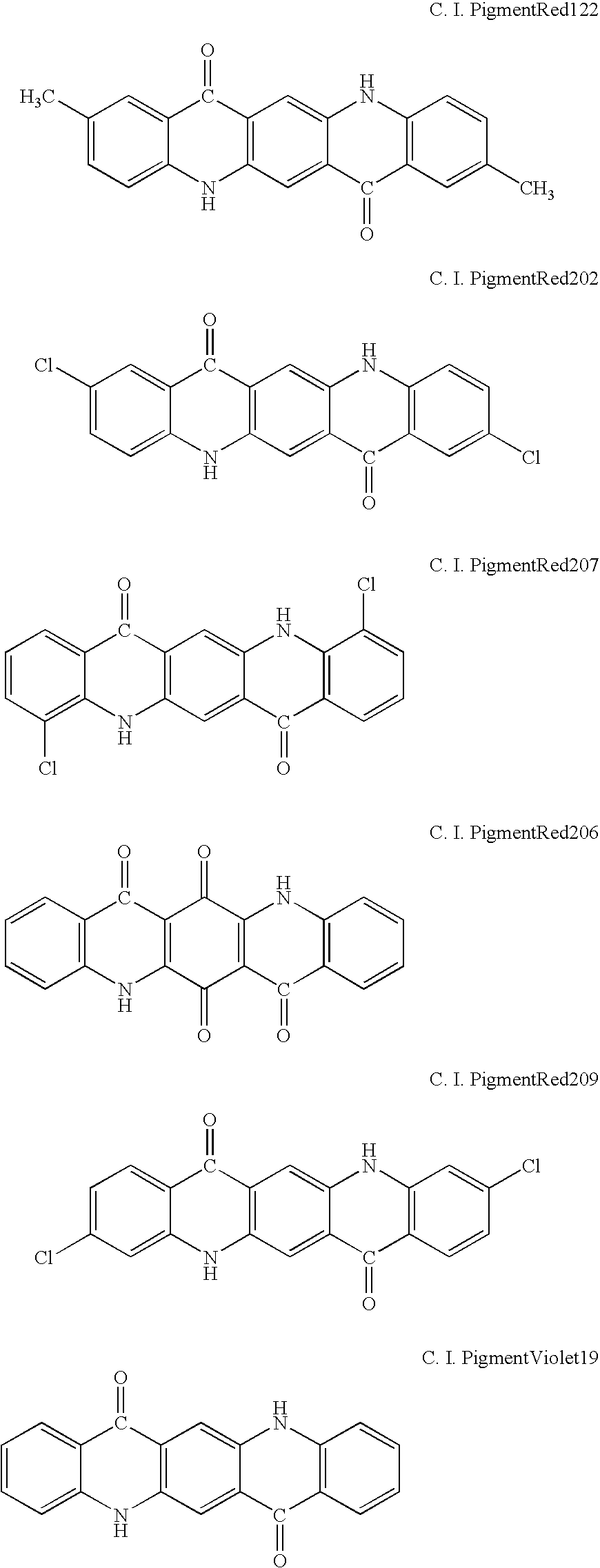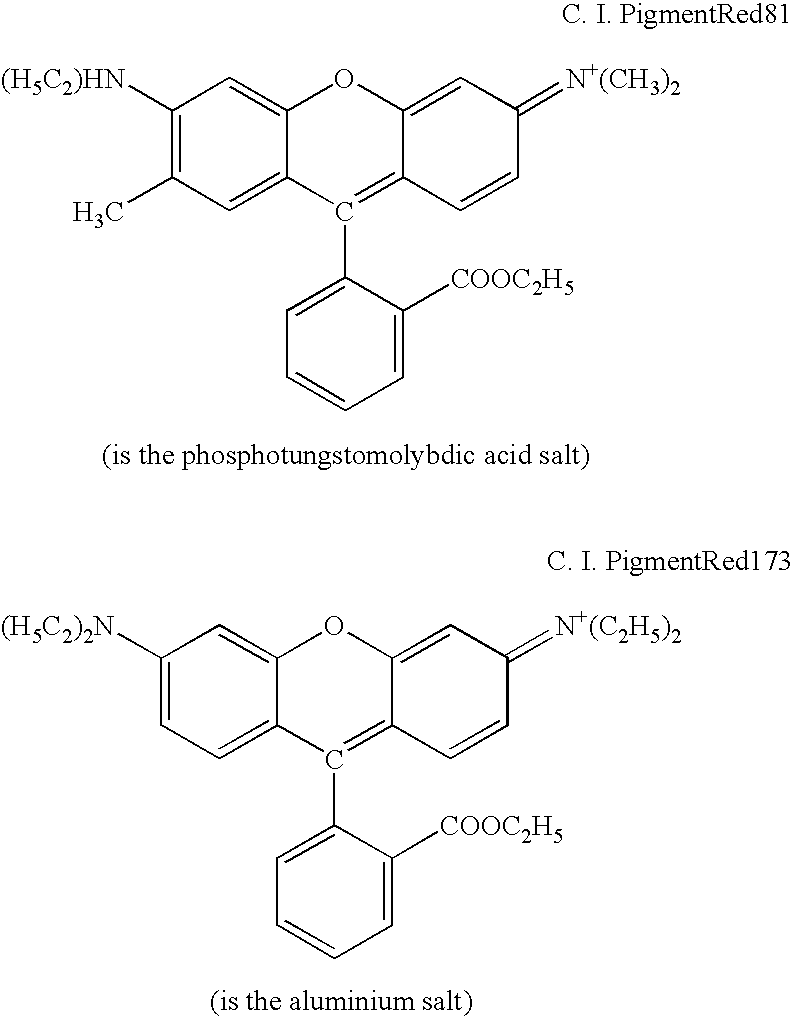Ink-jet recording liquid and process for producing the same
a technology of recording liquid and inkjet, which is applied in the field of inkjet recording liquid, can solve the problems of insufficient water resistance, light resistance, ozone resistance, and inability to print in a recording method, and achieve excellent printing performance and storage stability, excellent dispersibility stability, and excellent dispersibility. the effect of stability
- Summary
- Abstract
- Description
- Claims
- Application Information
AI Technical Summary
Benefits of technology
Problems solved by technology
Method used
Image
Examples
examples
The present invention will now be explained in further detail with reference to Examples. The present invention is not limited by the following Examples as long as the present invention does not exceed the gist thereof.
Furthermore, in Examples and Comparative Examples, % is on the basis of weight unless otherwise provided. The measurement of the particle diameter of the pigment dispersions, and the evaluation of the storage stability thereof and the adsorption of the dyes to the pigments in Examples and Comparative Examples were carried out by the following methods.
From each of the dyes to be used in the following Examples and Comparative Examples, prior to the use thereof, insoluble components such as inorganic salts and metal salts were removed by membrane filter filtration or the like, and organic impurities were removed by crystallization, so that the content of each of metal ions of Ca, Mg, Zn, Fe, Cu and Al was made 100 ppm or less. Thus, the dyes with the reduced content...
example 1
13.8 g of quinacridone red pigment PR-122 (Dainichiseika Kogyo Co., Ltd.; ECR-187; paste; solid content 29.7%), 4 g of a 10% aqueous solution of xanthene dye AR-51 (C.I. Acid Red 51: Aldrich Co.), and 32.2 g of deionized water were mixed and were then dispersed together with 0.5 mmφ zirconia beads serving as media in a paint shaker (Asada Iron Works, Co.: Paint Shaker PC, number of frequency 535 rpm (50 Hz)) for 6 hours, whereby a dispersion was obtained. The dye adsorption of the obtained dispersion was 0.07 g / g.
40.9 g of the above-mentioned RP-122, 13.5 g of the above-mentioned 10% aqueous solution of AR-51, and 95.6 g of deionized water were weighed and placed in a 200 ml beaker. The beaker was put into iced water and the mixture therein was dispersed in an ultrasonic homogenizer (Nihonseiki Seisakusho Ltd.; US-300T; employed tips 26 mmφ)for 3 minutes. After the temperature of the liquid was elevated to 20° C., the 3-minute dispersing was repeated until the total dispersing ti...
example 2
By use of the dispersion (a) in Example 1, a dispersion (c) was obtained in the same manner as in Example 1 except that the nonionic surfactant in the dispersion (b) was replaced by Brij78 (polyoxyethylene (20) stearyl ether (Mw=1151.57); Aldrich Co.).
By use of the obtained dispersion (c), an ink was obtained by using the same additives and the same preparation method as in Example 1. The results of the evaluation of the ink are shown in Table 1 and Table 2.
PUM
| Property | Measurement | Unit |
|---|---|---|
| particle diameter | aaaaa | aaaaa |
| adsorption | aaaaa | aaaaa |
| high performance liquid chromatography | aaaaa | aaaaa |
Abstract
Description
Claims
Application Information
 Login to View More
Login to View More - R&D
- Intellectual Property
- Life Sciences
- Materials
- Tech Scout
- Unparalleled Data Quality
- Higher Quality Content
- 60% Fewer Hallucinations
Browse by: Latest US Patents, China's latest patents, Technical Efficacy Thesaurus, Application Domain, Technology Topic, Popular Technical Reports.
© 2025 PatSnap. All rights reserved.Legal|Privacy policy|Modern Slavery Act Transparency Statement|Sitemap|About US| Contact US: help@patsnap.com



